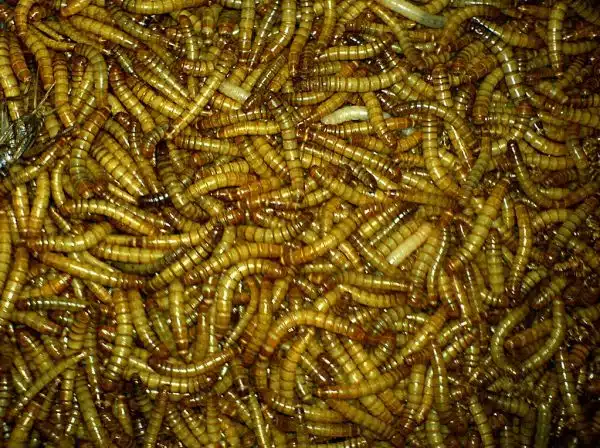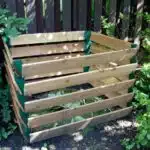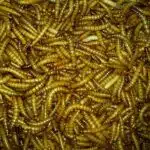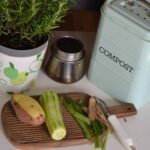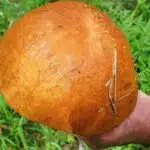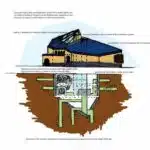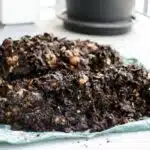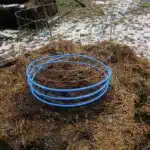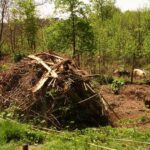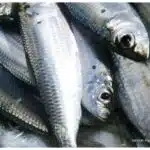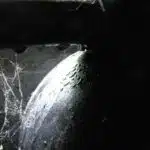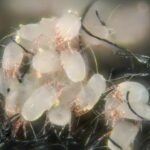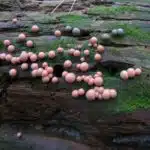The world of vermiculture has gained a lot of attention in recent years due to its numerous benefits. Vermiculture is the process of using worms to decompose organic waste and turn it into nutrient-rich compost. This compost can then be used to fertilize plants, gardens, farms, and even lawns. However, for a successful vermiculture operation, certain essential items are required to grow worms.
The essential items needed for a worm bin include bedding material, food scraps, moisture control systems, and proper ventilation. These items ensure that the worms have optimal conditions for growth and reproduction. It is important to note that without these essential items, the worms will not thrive or reproduce as they should, resulting in a suboptimal vermiculture operation. In this article, we will discuss each of these essential items in detail and their importance in growing healthy worms for successful vermiculture.
Understanding Vermiculture And Its Benefits
Vermiculture is the process of using worms to break down organic waste materials into nutrient-rich compost. This practice has become increasingly popular among eco-friendly gardeners who seek to reduce their environmental impact and improve the health of their soil. Composting benefits are numerous, including reducing waste sent to landfills, decreasing greenhouse gas emissions, and creating a sustainable source of fertilizer.
Worms play a critical role in the composting process by consuming organic matter and breaking it down into smaller particles that can be absorbed by plants. They also introduce beneficial microorganisms into the soil that help promote healthy plant growth. In addition, worm castings (excrement) contain high levels of nitrogen, phosphorus, and potassium, which are essential nutrients for plant development.
Overall, vermiculture is a cost-effective and environmentally friendly way to enhance the health of your garden or farm. By reducing waste and producing nutrient-rich soil amendments, you can create a more sustainable growing system that benefits both your plants and the planet. Choosing the right worm species is an important step in this process as different types of worms have varying feeding habits and environmental needs.
Choosing The Right Worm Species
Worm species selection is a crucial aspect of starting a worm bin. Different kinds of worms have varying abilities to process organic matter, which in turn affects the quality of the resulting vermicompost. The two most commonly used species for vermicomposting are Eisenia fetida and Eisenia hortensis. E. fetida, also known as red wigglers or tiger worms, are the most popular choice due to their high reproductive rate and ability to thrive in confined spaces. E. hortensis, on the other hand, are larger and more robust but reproduce at a slower rate.
When selecting a worm species, it is essential to consider their ideal habitat conditions. Worms require moist bedding material that mimics their natural environment while providing adequate oxygen flow. The bedding should be made up of materials such as shredded newspaper, cardboard or coconut coir with added compost or manure for added nutrients. Keeping the bedding moist but not too wet is necessary as worms breathe through their skin and require moisture to stay healthy.
In summary, choosing the right worm species involves considering factors such as their processing capabilities and ideal habitat conditions. An ideal worm species should be able to thrive in confined spaces and reproduce quickly while processing organic matter effectively. Providing them with an appropriate habitat that mimics their natural environment is also crucial for ensuring they remain healthy and productive in your worm bin.
Moving forward into selecting a suitable worm bin requires careful consideration of several factors such as size, material type and drainage systems among others.
Selecting A Suitable Worm Bin
- A suitable worm bin must be of the correct size to house the worms and accommodate their needs for food, water, and bedding.
- The materials used to construct the worm bin should be non-toxic and should not leach chemicals that would be harmful to the worms.
- The walls of the worm bin should be well-insulated to maintain the ideal temperature for the worms.
- The bin should also have adequate drainage to ensure that the worms have access to both water and air.
Size
Selecting a suitable worm bin is a critical aspect of creating a thriving vermiculture system. When considering the size of the bin, several factors must be taken into account, including bin material and space requirements. The type of material used to construct the bin can impact its overall size and weight capacity. For instance, wooden bins tend to be more substantial and bulkier than plastic ones. Likewise, the amount of space available in your home or garden will determine how large your worm bin can be.
Managing overpopulation is also a crucial factor when selecting a worm bin size. Worms reproduce quickly, and if their population exceeds the capacity of the bin, it can lead to overcrowding and inadequate food supply. To prevent this from happening, divide your worm bins into manageable sizes. For example, if you have several pounds of kitchen scraps per week, consider using multiple small bins instead of one large bin.
Dividing the bins also allows for better management of vermicomposting processes such as harvesting compost and adding fresh bedding materials. A smaller container may require more frequent maintenance but will provide better control over the environment wherein worms thrive best. As an expert in vermiculture systems, I recommend choosing a worm bin that meets your needs while having ample room for future growth without sacrificing quality compost production. Remember that proper management is key to achieving optimal results regardless of the size or type of worm bin you choose.
Materials
When it comes to composting with worms, selecting the right vermiculture equipment is crucial. One of the essential factors to consider when choosing a worm bin is the material it’s made from. Worm bins can be constructed from various materials, including plastic, wood, and metal. Each has its advantages and disadvantages that should be considered before making a final decision.
Plastic worm bins are lightweight, durable, and easy to clean. They’re also relatively inexpensive compared to other materials. However, they may not be as aesthetically pleasing as wooden or metal bins. On the other hand, wooden worm bins are more attractive and blend well with outdoor spaces such as gardens. They’re also sturdy and can last for years if maintained correctly. Nevertheless, wooden bins tend to be bulkier than plastic ones and require more effort to move around.
Metal worm bins are less common but offer unique advantages such as durability and resistance to pests. However, they tend to be heavy, which makes them difficult to move around when necessary. When selecting a suitable worm bin material for your needs, consider factors like availability, price range, aesthetic appeal, durability, and ease of use.
In conclusion, choosing the right worm bin material is an important step towards creating a thriving vermicomposting system. It’s vital to select a material that meets your needs while considering factors such as space requirements and managing overpopulation in your vermiculture system. By doing so with careful consideration of all options available on the market today will help you establish an efficient vermicomposting setup that will yield high-quality compost for years to come.
Preparing The Bedding Material
Bedding material is an essential component of a worm bin. It provides the worms with a comfortable environment to live and thrive in. The most commonly used bedding material for vermicomposting is shredded newspaper or cardboard, but there are various other bedding alternatives that one can use.
When preparing the bedding material, it is important to mix it with water until it is slightly damp. The moisture level should be optimal, not too wet or too dry. A good mixing ratio for the bedding material is 3:1 by weight – three parts bedding material and one part food scraps. This will provide enough carbon-rich materials for the worms to digest and produce high-quality compost.
Aside from shredded newspaper or cardboard, other examples of suitable bedding alternatives include peat moss, coconut coir, straw, or hay. These materials also have a high carbon content and break down slowly over time compared to food scraps. Using these alternatives requires careful monitoring of moisture levels as they can become too dense and compacted if not mixed properly.
As you prepare your worm bin’s bedding material, remember to choose what works best for you and your worms. Experiment with different ratios of beddings and observe how your worms respond to them. Remember that adding food scraps for the worms comes next in the process, which we will discuss further in the subsequent section.
Adding Food Scraps For The Worms
One of the most critical aspects of a successful worm bin is providing your worms with enough food scraps. The good news is that worms are not picky eaters, and they will consume a wide variety of organic matter. However, it is essential to avoid feeding your worms foods that are too acidic, spicy, or salty. These can harm or even kill the worms.
Composting techniques can be used to reduce food waste while also providing an ample food source for your worm bin. By composting, you can create nutrient-rich soil amendments that will benefit your garden and plants while reducing landfill waste. When adding food scraps to your worm bin, it is important to keep in mind the ratio of brown materials (carbon-rich) to green materials (nitrogen-rich). A good rule of thumb is to add one part green material to three parts brown material.
Reducing food waste by adding it to a worm bin is an excellent way to serve others as well as our planet. By diverting organic matter from landfills, we reduce greenhouse gas emissions and help create a more sustainable future. Not only that, but the resulting vermicompost produced by the worms is an excellent fertilizer for plants and gardens. In the next section, we will discuss how managing moisture levels in the bin is crucial for creating a healthy environment for your worms.
Managing Moisture Levels In The Bin
Moisture levels in a worm bin are critical for the success of vermicomposting. Too much moisture can lead to anaerobic conditions that produce bad odors and kill worms, while too little moisture can slow down the decomposition process. Managing moisture levels is essential to create a healthy environment for your worms.
To prevent mold growth and excess moisture in your worm bin, make sure to add bedding material like shredded newspaper or cardboard. Bedding material acts as a sponge, absorbing excess water and providing air pockets for ventilation. A good rule of thumb is to add bedding material equal to the amount of food scraps you add to the bin.
Additionally, monitor moisture levels by squeezing a handful of bedding material. The ideal moisture level is similar to a wrung-out sponge; it should be moist but not dripping wet. If you notice excess moisture or mold growth, adjust by adding more bedding material or reducing the amount of water you add when feeding your worms. By managing moisture levels, you can ensure a healthy and productive worm bin.
Proper ventilation is another critical factor in maintaining a successful worm bin. Inadequate ventilation can lead to an overgrowth of harmful bacteria and fungi, which can stunt worm growth and cause health problems for both humans and worms alike. Ensuring proper ventilation for the worms involves drilling small holes at regular intervals around the bin’s sides or covering them with breathable mesh screens. This allows air circulation without disturbing your worms’ habitat or drying out their environment. Remember that proper ventilation goes hand-in-hand with managing moisture levels in creating an optimal environment for your worms to thrive!
Ensuring Proper Ventilation For The Worms
Proper ventilation is crucial for the health and well-being of your worms. In fact, if there isn’t enough air flow in your worm bin, you can run into some serious issues such as foul odors, mold growth, and even death of your worms. It’s important to maintain a good balance between airflow and moisture to keep your worms happy.
Ventilation maintenance involves creating an environment that fosters optimal oxygen levels for your worms. One way to achieve this is by making sure that the bedding material in your worm bin is fluffy and not compacted. When bedding becomes too compressed, it can reduce airflow and limit oxygen availability. Additionally, make sure that the lid of your worm bin has holes or vents to allow for air exchange.
Monitoring the temperature inside the worm bin is also important when it comes to maintaining proper ventilation. If temperatures get too high, it can lead to decreased oxygen levels as well as increased moisture content which can create anaerobic conditions that are harmful to your worms. By keeping a close eye on temperature and providing proper ventilation, you’ll ensure that your worms have access to all the air they need to thrive.
Moving on from ensuring proper ventilation for your worms, monitoring temperature and ph levels is equally important for their wellbeing. Maintaining optimal conditions in these areas will help prevent any stress or harm being caused to our little friends in the worm bin.
Monitoring Temperature And Ph Levels
Thermometers are essential to monitor the temperature of a worm bin, while pH meters measure the acidity and alkalinity of the soil. pH buffers can help maintain a balance of the pH level, while temperature control helps regulate the temperature. Testing kits help to measure both parameters accurately and reliably, and digital displays can also be used for easy monitoring. Calibration is important for accuracy and precision, and it is also important to know the temperature ranges and pH ranges that are ideal for the bin and its soil composition. Acidity and alkalinity are important to consider when composting with worms.
Thermometers
Picture this: A thriving worm bin that is teeming with thousands of red wiggler worms, munching away at organic scraps and producing nutrient-rich vermicompost. However, to achieve this, it’s important to monitor the temperature levels within the worm bin regularly. Using thermometers for monitoring temperature is a crucial aspect of maintaining a healthy environment for your worms.
Thermometers are essential tools for any vermiculture enthusiast as they help in troubleshooting temperature issues in worm bins. When temperatures rise above 85°F or fall below 55°F, it can lead to stress on your worms and eventually cause them to die off. Monitoring the temperature levels with a thermometer can prevent such incidents from happening and ensure that your worms remain happy and healthy.
A good practice is to take readings from different areas of the worm bin as temperature variations might occur due to factors like sunlight exposure or uneven distribution of bedding material. This way, you can adjust the conditions accordingly by adding more bedding or adjusting the moisture levels. So, investing in a good quality thermometer is a wise decision and will help you provide optimal conditions for your worms to thrive!
Ph Meters
In addition to monitoring temperature levels, measuring acidity or pH levels is also crucial in maintaining a healthy environment for your worms. The optimal range for pH levels in a worm bin is between 6.0 and 8.0. Measuring pH levels can help determine if the bedding material and food scraps are within this range or not.
Using a pH meter is an effective tool for measuring acidity levels in the worm bin. It allows you to monitor the pH levels regularly and make necessary adjustments to maintain optimal conditions for your worms. Just like with thermometers, it’s essential to take readings from different areas of the bin as pH levels can vary due to factors such as uneven distribution of food scraps or bedding material.
Maintaining proper pH levels can prevent issues such as acidification or alkalization of the worm bin, which can harm your worms’ health and even lead to their death. By using a pH meter and regularly monitoring acidity levels, you can provide optimal conditions for your worms to thrive and produce nutrient-rich vermicompost that will benefit both your garden and the environment.
Ph Buffers
As a vermiculture expert, testing pH levels is one of the essential tasks in maintaining a healthy environment for your worms. While using a pH meter is an effective tool for measuring acidity levels, adjusting these levels can be challenging without the help of pH buffers.
A pH buffer is a solution that helps stabilize the pH level in a worm bin. It contains both acidic and basic components that resist changes in the pH level when added to the bin. By using pH buffers, you can maintain optimal conditions for your worms and prevent issues such as acidification or alkalization.
When adding pH buffers to your worm bin, it’s crucial to follow the manufacturer’s instructions carefully. Adding too much buffer can harm your worms’ health and affect their ability to produce vermicompost. By using proper amounts of pH buffers and regularly monitoring acidity levels, you can ensure that your worms are thriving and producing nutrient-rich compost that will benefit both your garden and the environment.
Harvesting Vermicompost From The Worm Bin
After monitoring the temperature and pH levels in your worm bin, it’s time to harvest the vermicompost. Did you know that on average, a pound of red worms can produce up to 0.5 pounds of compost per day? That means you can potentially harvest up to 182.5 pounds of vermicompost annually from just one pound of worms. This is not only great for reducing waste but also for producing a valuable fertilizer.
Using vermicompost as fertilizer is an excellent way to improve soil health and plant growth. Vermicompost contains essential nutrients such as nitrogen, phosphorus, and potassium that are vital for plant development. It also improves soil structure, water retention, and aeration. Plus, it’s organic and sustainable.
If you have excess vermicompost, you can consider selling it for profit. There is a growing demand for organic fertilizers, and vermicompost is no exception. You can sell it online or through local markets and nurseries. By doing so, not only are you reducing waste and promoting sustainability but also contributing to the local economy.
Moving forward with vermiculture requires troubleshooting common issues such as pests or overfeeding. However, with proper care and attention, your worm bin should provide an endless supply of nutrient-rich compost for your garden or even as a potential source of income.
Troubleshooting Common Issues In Vermiculture
As a vermiculture expert, it is important to understand that even with the best care, worm mortality can occur in worm bins. One common issue that may arise is overfeeding. Overfeeding can lead to an increase in acidity levels and cause worms to die. To prevent this issue, it is recommended to only feed worms once a week and to add small amounts of food scraps at a time.
Another issue that may arise in worm bins is fruit fly infestations. Fruit flies are attracted to the decomposing organic matter in the bin and can lay their eggs on the surface of the bedding material. This can lead to an increase in fruit fly populations and hinder worm growth. To address this issue, it is recommended to cover any exposed food scraps with bedding material and ensure that the bin has proper ventilation.
To troubleshoot these common issues, it is important to regularly check on the moisture levels within the bin, as well as ensuring proper air flow and temperature control. Additionally, it may be helpful to separate any dead worms from live ones and adjust feeding habits accordingly. By addressing these potential problems early on, you can ensure a healthy environment for your worms and promote successful vermiculture practices without damaging or losing them in large numbers.
Conclusion
Vermiculture is a sustainable and cost-efficient way of composting that has gained popularity in recent years. By using earthworms to break down organic matter, vermicomposting produces nutrient-rich vermicompost that can be used as a soil amendment for gardens or farms. To successfully grow worms, it is important to have the right essential items in your worm bin.
Firstly, choosing the right species of worms is crucial for a successful vermiculture operation. Eisenia fetida, commonly known as red wigglers, are the most popular species of worms used in vermiculture due to their high reproductive rate and ability to tolerate different environmental conditions. Secondly, selecting a suitable worm bin is also important. The ideal worm bin should be made of breathable material, have drainage holes at the bottom, and be easy to access for maintenance purposes.
Preparing the bedding material for the worms involves using moist shredded paper or coconut coir as a base layer. Adding food scraps such as fruit and vegetable peelings provides the worms with necessary nutrients. Ensuring proper ventilation through air holes or mesh screens helps maintain optimal oxygen levels for the worms’ survival. Monitoring temperature and pH levels ensures that the worm bin remains within acceptable ranges for optimal worm growth.
In conclusion, vermiculture offers numerous benefits such as reducing waste volume and producing nutrient-rich soil amendments. By following these essential steps in growing worms, you can ensure successful vermicomposting. Remember to troubleshoot any issues that may arise during your journey in vermiculture. Vermiculture may seem daunting at first but with time and practice, you can become an expert just like many others who have reaped its rewards!
Image Credits
- “worms” by Wahj (featured)

